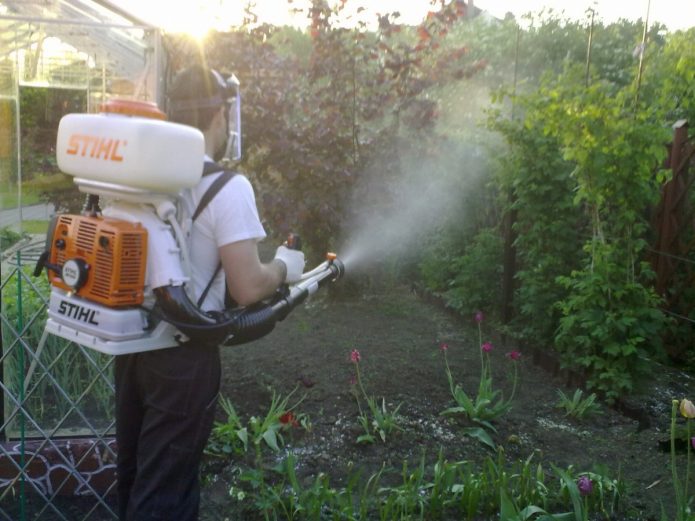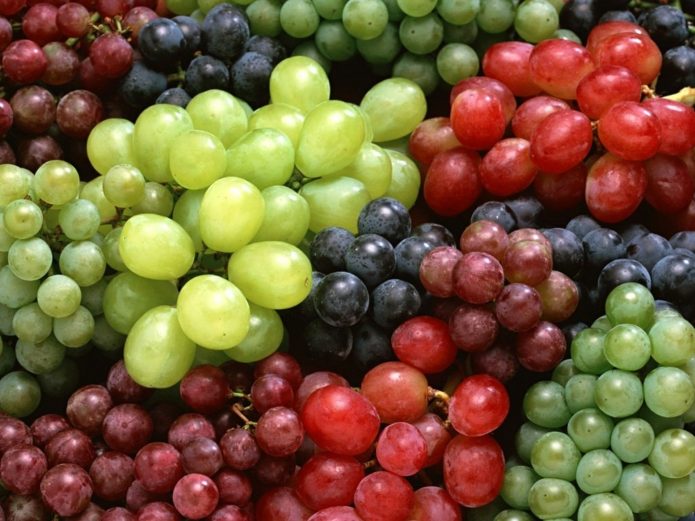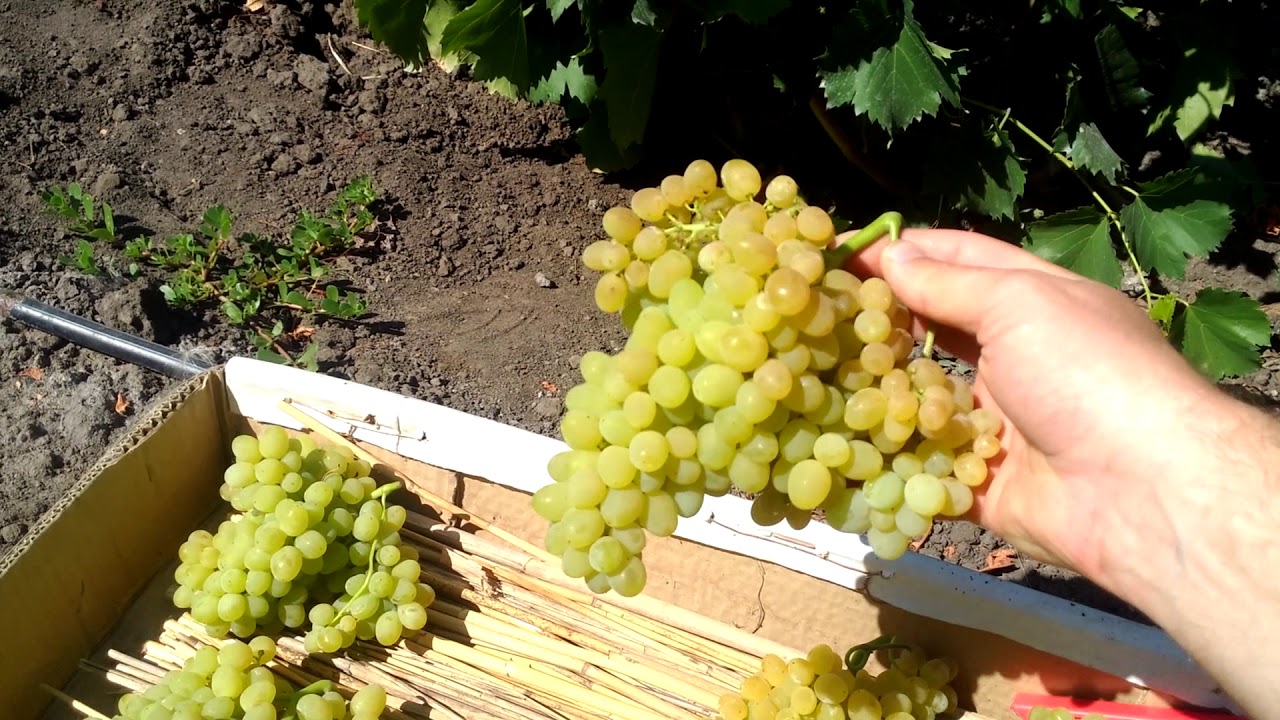Top dressing of grapes in spring is an integral part of plant care. Thanks to the additional nutrition, this culture will delight gardeners with a large harvest of large berries with tasty pulp. Consider the basic rules and timing of spring feeding of grapes, thanks to which gardeners will be able to get the most out of the plant.
Content
What does spring feeding of grapes give
In early spring, when the culture begins to revive after a dormant period, it takes nutrients from the soil. Their stock gives it the opportunity to grow actively throughout the spring-summer period and bear fruit productively in the fall. However, it may not be enough. Additional introduction of nutrients into the soil in spring is necessary for the following reasons:
- provided that the plant receives a sufficient amount of trace elements, it forms larger and more juicy fruits;
- thanks to feeding, the grapes are gaining strength - flower stalks and clusters do not fall;
- after an unsuccessful wintering, fertilizing can restore the liana's lost ability to bear fruit;
- absorption of nutrients increases the plant's immunity and makes it immune to pests and parasites, which eliminates the need for the grower to spray the crop with "chemistry";
- good feeding nourishes the plant for several years ahead and helps to survive the winter safely.
Features of fertilizing young and old grapes in spring
This culture needs two types of feeding:
- the main one is held every few years in early March;
- additional - carried out annually from March to June.
Important! The lack of any element in grapes can be easily traced by external signs. So, the lack of nitrogen will express itself by the light green color of the leaves, the slow formation of the vine, potassium - their brown edging, phosphorus - brown spots on the leaves and late flowering, iron - yellowing, sulfur - rotting and dying off of the base of the vine. Based on these signs, the grower will be able to determine the plant's needs for additional feeding and add the required portion of the missing trace element.
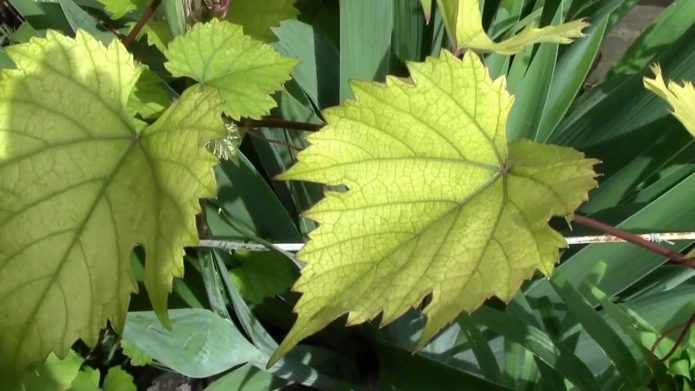
This type of grape leaves signals a lack of iron, which is easy to eliminate by spraying them with iron vitriol.
The main fertilization of young grapes, that is, a seedling in the first three years of life, is carried out immediately after planting. It is necessary for the plant to start and begin to gain mass. The introduced portion of nutrients is enough for the first two to three years of life, the rest of the time it is recommended to additionally fertilize the culture several times a season, not forgetting to cut off the nascent peduncles.
To stimulate growth and development, young plants are not allowed to bear fruit: all their strength is spent on strengthening and forming stems, as well as preparing for the first wintering - a rather dangerous period. To prevent the seedling from dying, its feeding should be abundant.
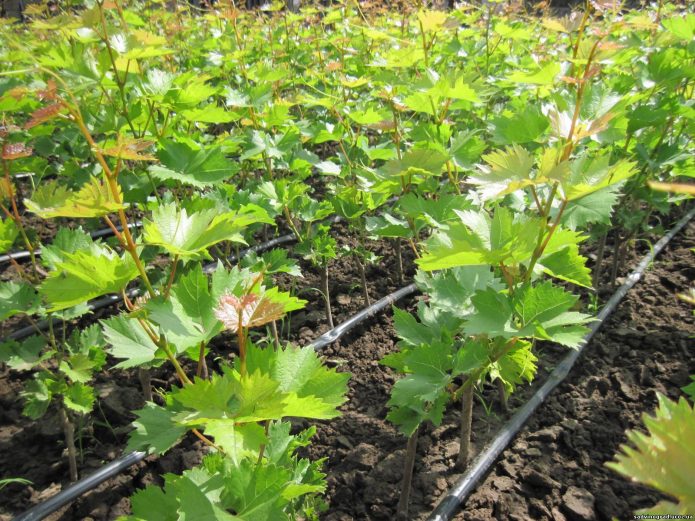
It is advisable to leave no more than two branches on a rooted seedling, which will allow the plant to more efficiently use the introduced nutrients
After the plant gains mass and strength, in the fourth year of its life, for the first time, it is allowed to form fruits. During this period, all nutrients are directed to them, and feeding begins to have a different meaning: stimulating the formation of large clusters and juicy berries.
Old grapes are fertilized according to the same scheme: the main portion is given once every few years, and additional ones are constantly introduced during the period of active life of the plant. In addition, external top dressing is carried out in the intervals between the root, that is, spraying, in which the absorption of nutrients is twice as good.
Timing and frequency of feeding
The main portion of fertilizers is applied in early-late March, depending on the climate of the region.
Additional feeding is strictly periodic, in the spring it is carried out three times:
- in mid-April, when the grapes are still dormant or are just beginning to form leaves;
- in mid to late May, two to three weeks before the appearance of inflorescences;
- at the end of May, after the formation of ovaries.
Important! Foliar dressing is best done before the fruit ripens, when it will no longer be as effective.
Types of fertilizers, their correct preparation and application
There are two options here: organic and mineral. Each of them must be prepared according to the rules and introduced into the desired root zone. Let's consider these nuances in more detail.
Organic
Organically, fertilizing is used as the main one - those that are applied every 2-3 years. Among organics, the following fertilizers are most often used:
- manure - added as a layer when planting grapes in the soil;
- compost - contains all useful microelements and is used in the same way as manure, continuing to feed the plant from the roots for a long time;
- slurry - two parts of water are added to one part of the manure, the resulting mixture is infused for up to ten days and applied as a liquid fertilizer at a dosage of 10 liters per bush;
- chicken droppings - 4 liters of water are taken for 1 liter of dried chicken waste product, this solution is kept for two weeks, then water is added again to 10 liters and 1 liter is spent on each bush;
- sunflower husk - densely compressed husk with a volume of 2 liters is insisted exactly one day in 8 liters of water, each liter of the resulting slurry is diluted with 9 liters of water, after which the grapes are fed with this solution;
- infusion of dry cow cake - 1 liter of material is infused for 5-10 days in 10 liters of water, after which the resulting solution is poured under one bush.
Attention! Organic fertilizers are applied strictly before the start of fruit ripening, and humus can be used exclusively in dug trenches, mixing well with the ground.
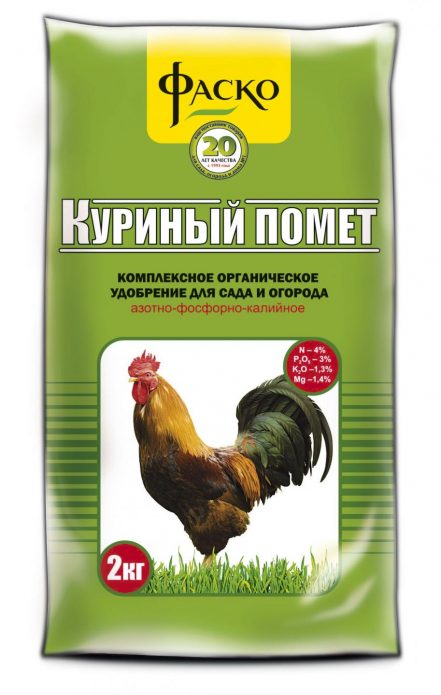
Chicken droppings in granules have a completely tolerable odor and should not frighten even the most fastidious gardeners.
Mineral, universal composition
In spring, grapes need the following minerals:
- phosphorus;
- potassium;
- sulfur;
- iron;
- nitrogen.
Experienced gardeners feed this plant with a single mineral solution that includes all the nutrients. Here is its composition:
- superphosphate - 2 tbsp. l .;
- ammonium nitrate - 1 tbsp. l., you can replace it with 0.5 tbsp. l. urea;
- potassium sulfate - 1 tsp;
- water at room temperature - 10 liters.
It is permissible to take 3 tbsp. l. Nitroammophoska instead of superphosphate and ammonium nitrate in this recipe, but the original version is more balanced and therefore preferable.

The second name of urea is carbamide, and the nitrogen content in it is about twice as high as in ammonium nitrate
All these components are dissolved in water one by one, and the resulting mixture by any of the above methods is poured under one bush.To fertilize the second bush, it is necessary to prepare the solution again or, in the case of preliminary abundant watering of the plants, initially double or triple the concentration.
Feature! Such a composition is suitable for carrying out the first two additional dressings; for the third, ammonium nitrate is excluded.
If necessary, additional introduction of any component is possible, if the gardener, according to the signs described above, saw a lack of the corresponding substance in the plant.
Spraying with iron vitriol is also useful, helping to protect the seedling from frost and saturate it with iron. The solution is prepared at the rate of 50 g of 5% substance per 10 l of water.
Alternatively, you can still feed the grapes with ready-made mineral fertilizers sold in a gardening store:
- Novofert;
- "Solution", etc.
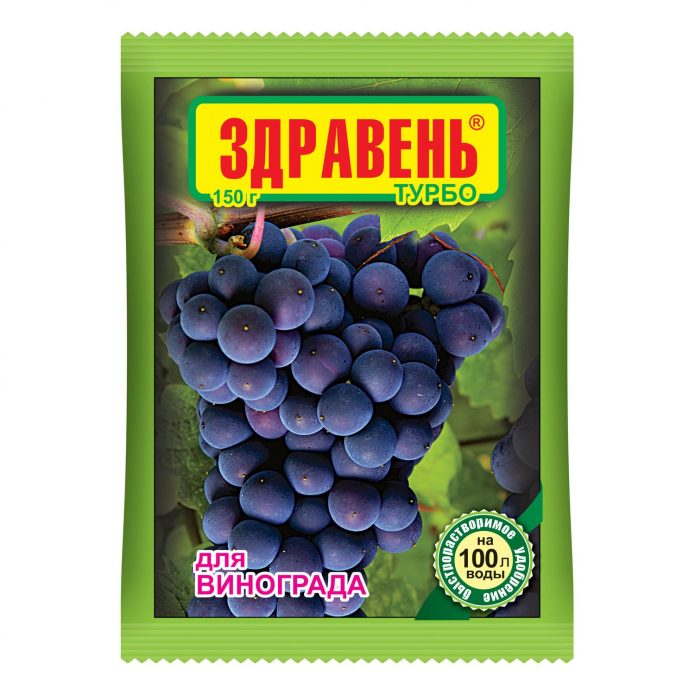
In addition to the basic minerals, the composition of such fertilizers often includes many balanced trace elements - "vitamins" for the plant
How to Ensure Effective Fertilization
Nutrients should be added to the main root. Nutrition of side roots will promote their growth instead of transporting substances necessary for grapes to the tops of shoots and fruits.
To ensure high-quality delivery of fertilizer to the root, it is recommended to plant the plant in the center of a plastic pipe with a diameter of 1 m, which is inserted into the ground to a depth of 50 cm.
If such an event has not been held, you can apply other methods:
- digging a trench around the planting site to a depth of 5 cm - fertilizer should be poured into it;
- the formation of multiple depressions up to 5 cm in diameter at the same distance from the center of planting.
Important! Effective spreading of fertilizer is achieved by pre-watering the plant abundantly a few hours before feeding.
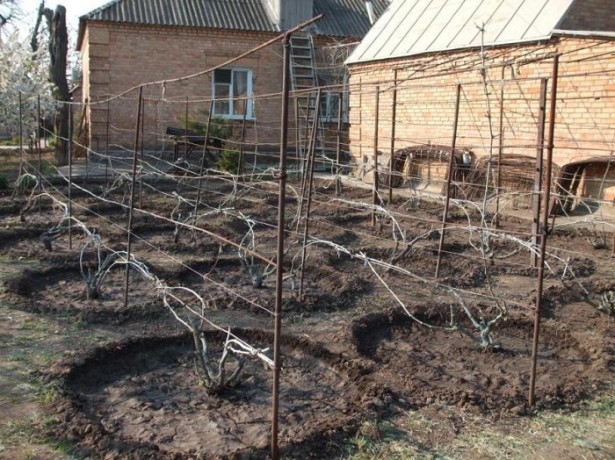
Digging out such depressions near the seedling itself must be done very carefully so as not to touch its roots.
External feeding
This type is carried out by spraying a fertilizer solution onto the leaves of the grapes. They quickly absorb moisture and absorb all trace elements.
The composition is prepared according to the same scheme as for root feeding, only microelements such as boron, zinc, copper, etc. are additionally introduced. Plus 50 grams of sugar are added to 10 liters of solution. It is necessary for delayed evaporation of liquid from the leaves.
Of the ready-made compositions, the following are used:
- Florovit;
- "Biopon";
- "Master", etc.
For spraying, organic fertilizers of a gentle composition can also be used: ash, grass infusion, etc.
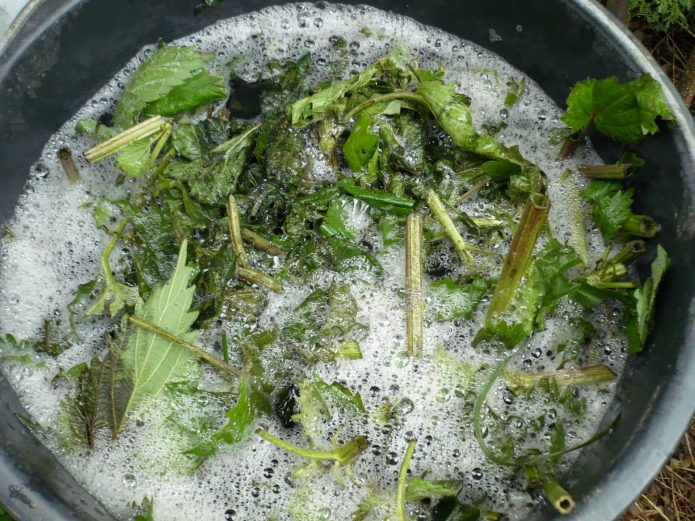
Such fertilizers are as environmentally friendly as possible and cost nothing, except labor, so if the plant looks healthy only under the influence of organic matter, why not limit it to it
There is an effective recipe: 1 liter of ash is mixed with 5 liters of water. The solution is infused for ten days.
When following the basic recommendations for spring feeding of grapes in the fall, you can enjoy ripe berries.
How to properly feed grapes: video for beginners
Reviews of spring feeding options and their effectiveness
In early spring, nitrogen, namely calcium nitrate, is superficial, but it is advisable to choose a time before the rain so that it does not evaporate and wash off into the soil soon. And then I feed on those days when I am not lazy; D, with a drop of soluble fertilizer.
After opening the bushes, I check the condition of the vine (no mold, mechanical damage, if everything is in order, I make a "dry" garter of the vine to the trellis. And now the question is, what did you do to the grapes (brought organic matter before winter, or fed some kind of fertilizer, prepared the grape planting pit , what is its age) After wintering, I process it with 3% iron sulfate or 5-7% carbamide + 0.5% copper sulfate (the so-called eradicating treatment for sores), after that I wait for how the buds will bloom and how to develop.Grapes need more moisture at first.
I remove all the mulch for the winter. Alas. Then I cover the grapes. In the spring, I make pits near the grapes with an ice screw, I add organic matter and mineral water there, and the mulch appears along with the grass mowed in the spring. If you spread manure superficially, it will not bring you the desired result - it will simply serve to increase the upper humus layer of the soil. In order for top dressing, the grapes must receive nutrients from your manure, which means that the manure must come into contact with the soil solution of capillary water. When the organic matter is not digged, nitrogen immediately leaves it and it turns out that the manure will already be practically without nitrogen.
Be careful not to fall in love with young animals in large doses. After numerous experiments, I came to the decision that 10g / bucket of the master for a young bush of the first vigitation is quite enough, given the filled hole, if brought into the root zone. storm with a fishing drill in the corner of the landing pit with a block of 30 cm and pour in half a bucket. experiments with high concentrations either did not give better results or suppressed the growth of the young. Doses of 20 grams / bucket of ammonium nitrate - wild strawberry 300 g of solution per bush, has inflated the leaves and has not been able to tear it off the ground for two weeks. experimental kesha under the fence pervagodka, in May, half a bucket of solution, fell asleep until mid-June. In adult bushes from 20 g / bucket in different ways, Arcadia says thank you and rushes like bad, Laura falls into a tailspin. I think it depends on many factors, if you pour it into an irrigation pipe, then in an arid climate it is braided with roots and solutions from those that I have tried, master, am. saltpeter, superphosphate, in a concentration of 20 g a bucket in my conditions often burn the roots. which may not happen in a rainy climate.
Top dressing of grapes in spring allows gardeners to strengthen and improve the plant, as well as protect it from frost. Proper and timely fertilization will lead to an annual increase in the volume of bushes with bright green foliage and an ever larger yield of fruits of excellent taste.

